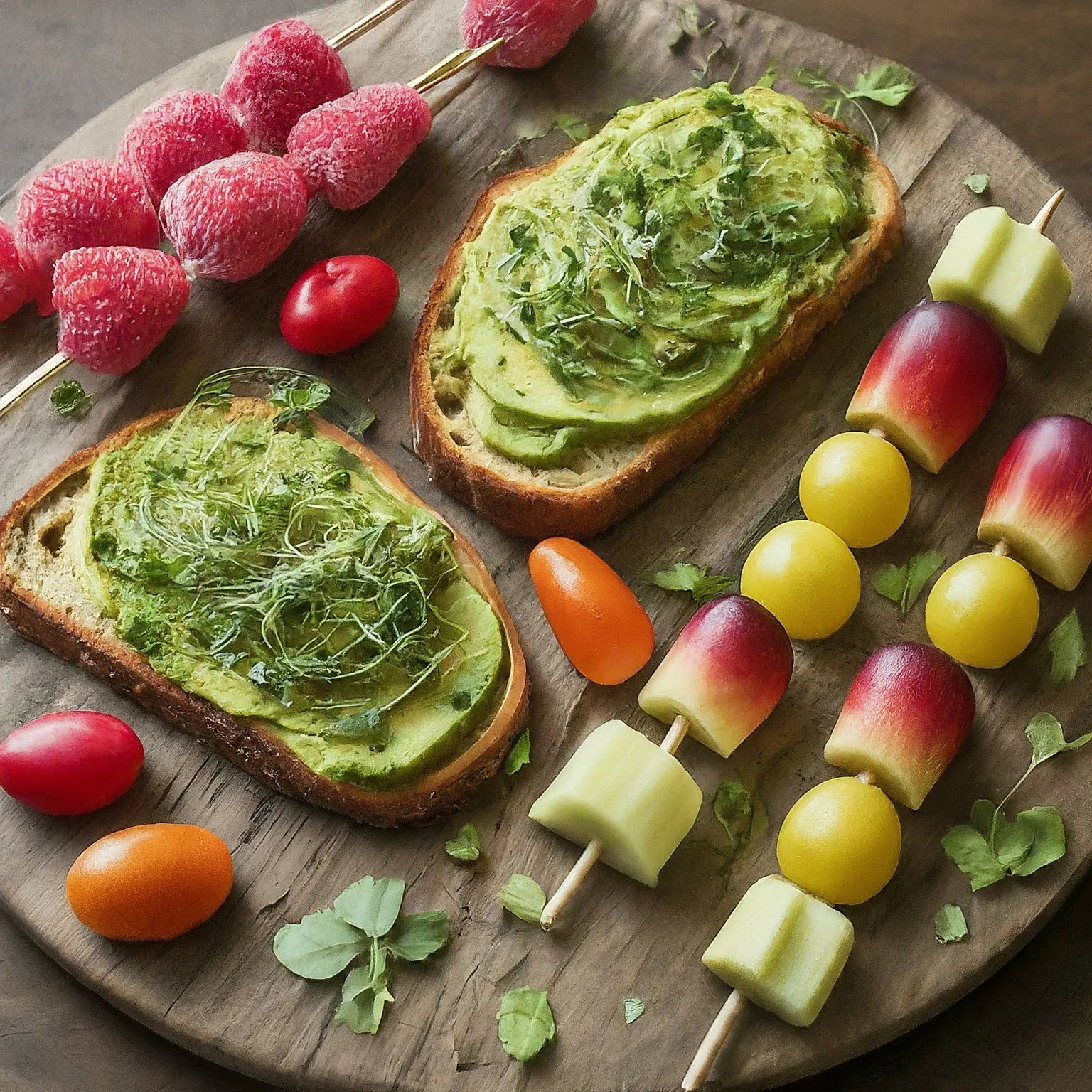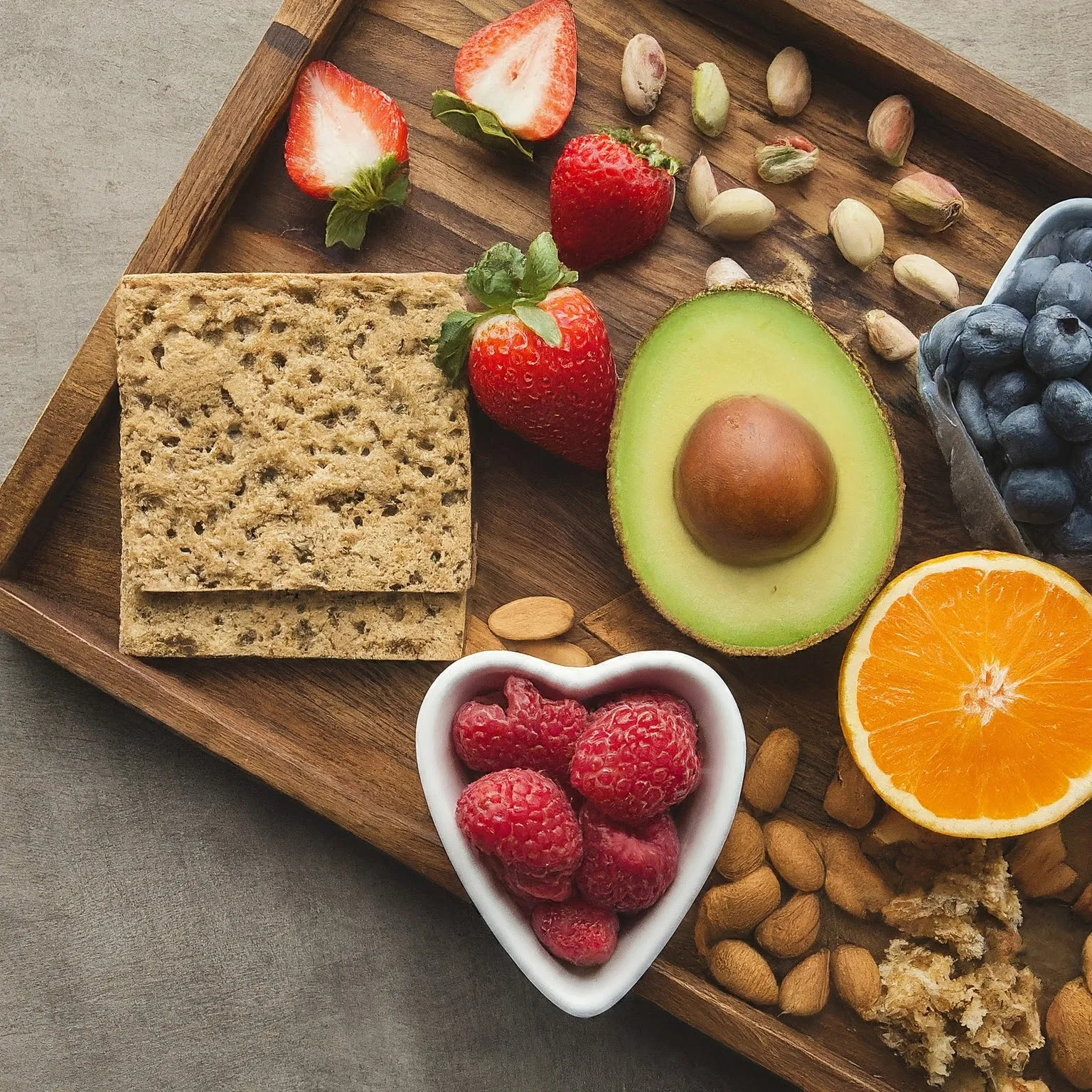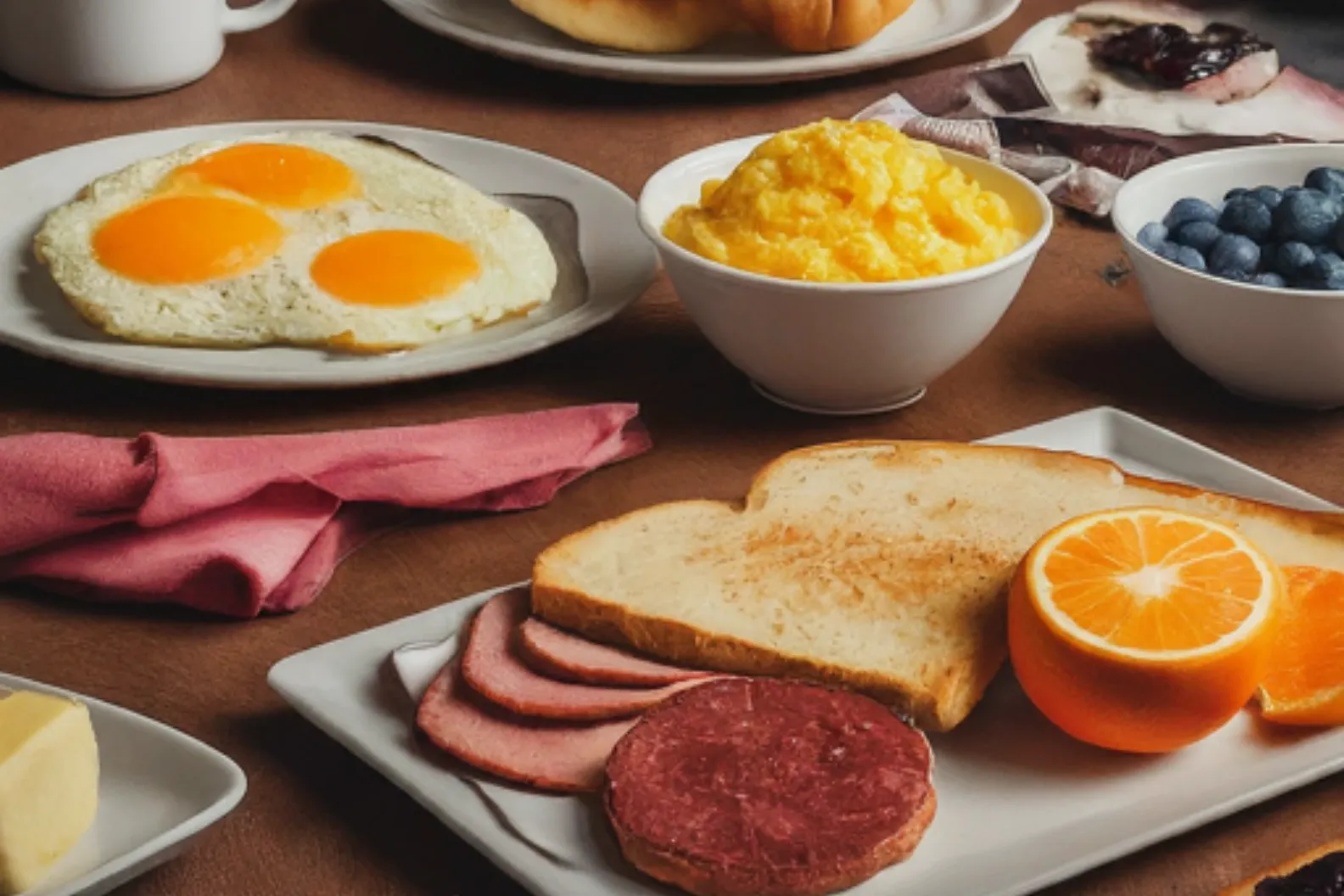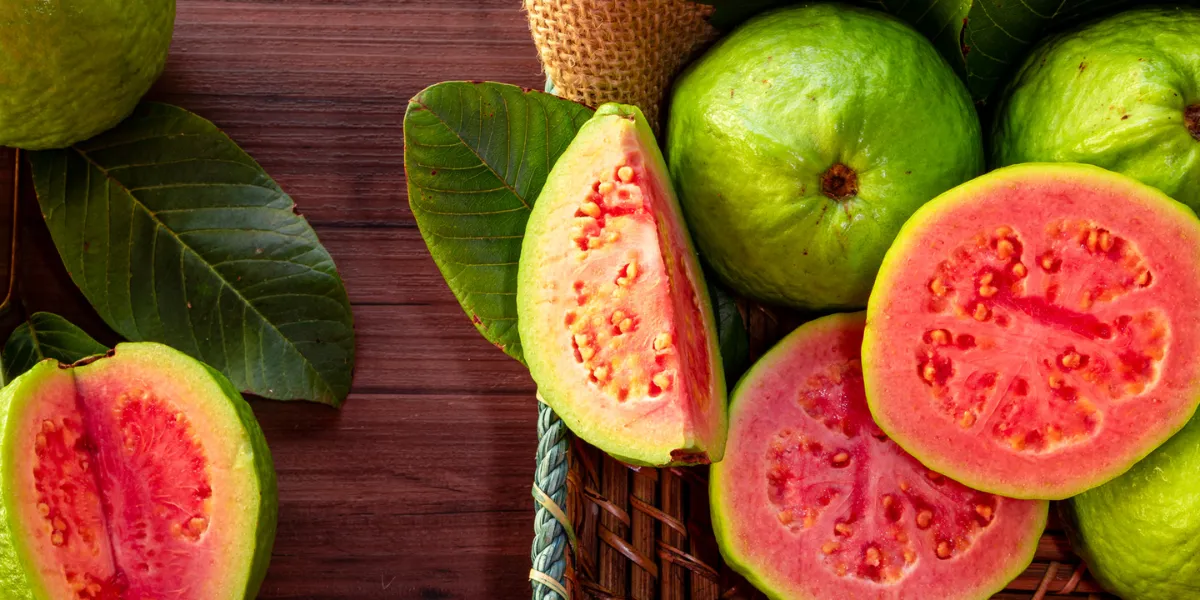The guava, a tropical fruit with a sweet and tangy flavor, is a delicious and nutritious addition to any diet. But with its bumpy skin and hidden seeds, you might be wondering how to best enjoy it. Fear not, guava enthusiast! This guide will walk you through everything you need to know about selecting, preparing, and savoring this delightful fruit.
Table of Contents
TogglePicking the Perfect Guava: Selection Tips
Before you dive into guava goodness, it’s important to choose a ripe fruit. Here’s how to identify the perfect guava:
- Color: Look for guavas with yellowish-green skin, sometimes with a hint of pink or red. Avoid completely green guavas, as they will be unripe and tart.
- Softness: Give the guava a gentle squeeze. It should yield slightly to pressure but not feel mushy. A rock-hard guava is unripe.
- Aroma: A ripe guava will have a sweet, fragrant aroma. If you don’t smell anything, it might not be ripe yet.
Bonus Tip: For an extra burst of flavor, choose guavas with slightly wrinkled skin. This indicates a higher sugar content.
Guava Preparation: Slicing and Dicing
There are two main ways to prepare guava:
1. Eating it Whole:
This method is perfect for those who don’t mind the seeds. Simply wash the guava thoroughly under running water and enjoy it like an apple!
2. Slicing and Dicing:
This method allows you to remove the seeds and skin if desired. Here’s how:
- Wash the guava: Rinse the fruit thoroughly under cold water.
- Cut it in half: Use a sharp knife to cut the guava in half lengthwise or crosswise.
- Seed Removal (Optional): There are two ways to remove the seeds:
- Scooping: Use a spoon to scoop out the flesh, leaving the seeds behind.
- Slicing: Cut the guava halves into thin slices and discard the seeds as you eat.
- Skin Removal (Optional): If you prefer not to eat the skin, use a paring knife to carefully peel it away.
Tip: The guava flesh can be quite sticky. To prevent your knife from sticking, dip it in water occasionally while cutting.
Guava Galore: Different Ways to Enjoy
The beauty of guava is its versatility. Here are some delicious ways to enjoy it:
- Fresh Snack: Enjoy guava slices on their own as a healthy and refreshing snack.
- Fruit Salad: Add diced guava to your favorite fruit salad for a tropical twist.
- Yogurt Parfait: Layer guava slices with yogurt, granola, and honey for a nutritious and satisfying breakfast.
- Smoothies and Juices: Blend guava with other fruits and vegetables for a vitamin-packed smoothie or a refreshing juice.
- Savory Twist: Believe it or not, guava can also be enjoyed in savory dishes. Try adding chopped guava to salsa or chutney for a unique flavor profile.
Beyond the Basics: Exploring Guava Flavors
Guava comes in various varieties, each with a slightly different flavor profile. Here’s a quick guide:
| Variety | Color | Flavor Profile |
|---|---|---|
| Pink Guava | Light pink skin | Sweet and floral |
| Red Guava | Deep red skin | Sweeter and less tangy than pink guava |
| Yellow Guava | Yellowish-green skin | Tangy and slightly acidic |
| Apple Guava | Apple-shaped with light green skin | Sweet and mildly sour |
drive_spreadsheetExport to Sheets
10 FAQs About Guava
- Can I eat the guava seeds? Yes, guava seeds are perfectly safe to eat. They are a good source of fiber, but some people find them a bit crunchy.
- What does guava taste like? Guava has a sweet and tangy flavor, with some varieties leaning more towards sweetness and others more towards tartness.
- How to store guava? Store ripe guavas in the refrigerator for up to 4 days. Unripe guavas can be left at room temperature to ripen.
- Can I freeze guava? Yes, you can freeze guava slices for up to 8 months.
- Is guava good for you? Absolutely! Guava is a rich source of vitamins A and C, as well as fiber and antioxidants.
- How many calories are in guava? One guava has about 37 calories.
- What are some health benefits of guava? Guava may boost your immune system, improve digestion, and promote healthy skin.
- Where can I buy guava? You can find guavas in several places:
- Grocery Stores: Most major grocery stores, especially those with a good produce section, will carry guavas during their peak season (typically spring, summer, and early fall). Look for them near other tropical fruits like mangoes and papayas.
- Ethnic Markets: Asian, Latin American, and Caribbean grocery stores are more likely to carry guavas year-round, as they are a staple fruit in these regions.
- Online Retailers: Some online grocery stores and specialty fruit vendors offer guavas for delivery.
- Farmer’s Markets: During guava season, you might find them at farmer’s markets, especially if you live in a region with a tropical climate.
Tip: When buying guavas, look for fruits that are locally grown whenever possible. This ensures freshness and supports local farmers.
Guava Seasonality: When to Expect It
Guava availability depends on the variety and your location. Here’s a general guideline:
- Peak Season: In tropical regions, guava trees can produce fruit year-round. However, there’s usually a peak season when guavas are most abundant and affordable. This typically falls between spring, summer, and early fall in many parts of the world.
- Off-Season: Outside the peak season, guavas might be less readily available and more expensive.
Best Ways to Enjoy Guava
Guava is a versatile fruit that can be enjoyed in various ways, depending on personal preference and culinary creativity. Here are some popular ways to eat guava:
- Fresh and Ripe: Enjoy guava fresh and ripe, simply by washing it thoroughly, cutting it into slices, and eating it with or without the skin. The natural sweetness and juiciness of ripe guava make it a refreshing and satisfying snack.
- Juiced: Blend ripe guava with water to make fresh guava juice. You can also add a squeeze of lemon or lime juice for extra flavor. Strain the juice if you prefer a smoother texture.
- Salads: Add sliced or cubed guava to fruit salads, green salads, or grain salads for a tropical twist. Guava pairs well with ingredients like mango, pineapple, cucumber, avocado, and arugula.
- Smoothies: Include guava in smoothies along with other fruits, leafy greens, yogurt, milk, or juice for a nutritious and flavorful beverage. Experiment with different combinations to find your favorite flavor combinations.
- Salsas and Chutneys: Dice guava and combine it with onions, tomatoes, cilantro, lime juice, and spices to make a refreshing salsa or chutney. Serve it as a topping for grilled fish, chicken, or tacos.
- Guava Cheese: Cook guava with sugar and lemon juice to make guava cheese, a sweet and tangy paste that can be spread on toast, and crackers, or used as a filling for pastries and desserts.
- Jams and Preserves: Cook guava with sugar and water to make guava jam or preserves. Enjoy it on toast, biscuits, and pancakes, or use it as a filling for cakes, cookies, and pastries.
- Ice Creams and Sorbets: Blend guava with coconut milk or cream to make dairy-free guava ice cream or sorbet. Freeze the mixture in ice cream molds or trays for a refreshing and creamy treat.
- Grilled or Baked: Grill or bake guava halves or slices for a caramelized and smoky flavor. Serve them as a side dish or dessert, drizzled with honey or sprinkled with cinnamon.
- Teas and Infusions: Use guava leaves to make herbal teas or infusions. Steep guava leaves in hot water for a soothing and aromatic beverage that is believed to have various health benefits.

Can You Eat Raw Guava?
Yes, you can eat raw guava. Eating fresh and ripe guava is a popular way to enjoy this tropical fruit. Simply wash the guava thoroughly, cut it into slices or quarters, and remove any seeds if desired. Guava can be eaten with or without the skin, depending on personal preference.
Is it OK to Eat the Seeds of Guava?
Yes, it is safe to eat the seeds of guava. Guava seeds are edible and contain small amounts of dietary fiber. Some people choose to spit out the seeds while eating guava, while others consume them along with the fruit. The seeds are generally small and soft, making them easy to chew and digest.
Do You Eat the Skin of Guava?
Yes, you can eat the skin of guava. The skin of guava is edible and contains additional nutrients and dietary fiber. However, some people prefer to peel the guava before eating it, especially if the skin is thick or has a bitter taste. If you choose to eat the skin, make sure to wash the guava thoroughly to remove any dirt or pesticides.
Does Eating Guava Lighten Skin?
There is no scientific evidence to suggest that eating guava can lighten skin. While guava is a nutritious fruit that is rich in vitamin C and antioxidants, its consumption is not associated with skin-lightening effects. However, consuming a balanced diet that includes a variety of fruits and vegetables can contribute to overall skin health and radiance.
Which is Better: Pink or White Guava?
Both pink and white guava varieties offer unique flavor profiles and nutritional benefits. Pink guava tends to have a sweeter and more aromatic flavor, while white guava is slightly less sweet with a milder taste. Ultimately, the preference between pink and white guava comes down to personal taste. Both varieties are nutritious and can be enjoyed in various culinary applications.
Is Guava Better Than Apple?
Guava and apple are both nutritious fruits that offer various health benefits. Guava is particularly high in vitamin C, fiber, and antioxidants, while apples are rich in fiber, vitamin C, and other essential nutrients. Both fruits are low in calories and can support overall health and well-being as part of a balanced diet. The choice between guava and apple ultimately depends on personal taste preferences and nutritional needs.
10 Benefits of Guava
- Rich in Vitamin C: Guava is an excellent source of vitamin C, which supports immune health, collagen production, and antioxidant defense.
- High in Fiber: Guava is a good source of dietary fiber, which supports digestive health, regulates blood sugar levels, and promotes satiety.
- Antioxidant Properties: Guava contains antioxidants such as vitamin C, lycopene, and flavonoids, which help protect cells from oxidative damage and reduce inflammation.
- Boosts Immune System: The high vitamin C content in guava helps strengthen the immune system and protects against infections and illnesses.
- Supports Digestive Health: The fiber in guava promotes healthy digestion, prevents constipation, and supports regular bowel movements.
- Promotes Heart Health: Guava is low in cholesterol and saturated fat, making it heart-healthy. It also contains potassium, which helps regulate blood pressure levels.
- Aids Weight Management: Guava is low in calories and high in fiber, making it a filling and satisfying snack that can aid in weight management and promote satiety.
- Improves Skin Health: Guava is rich in vitamin C, which plays a crucial role in collagen synthesis, helping to maintain skin elasticity and firmness. The antioxidants present in guava also help protect the skin from damage caused by free radicals, reducing the signs of aging such as wrinkles and fine lines.
- Promotes Wound Healing: The vitamin C content in guava is essential for collagen production, which is vital for wound healing. Consuming guava can help speed up the healing process and reduce the risk of infection.
Conclusion: Embrace the Guava Goodness
Guava is a delightful fruit with a unique flavor and a treasure trove of health benefits. Now that you know how to select, prepare, and enjoy it, you can incorporate this tropical treat into your diet in endless ways. So, the next time you’re looking for a refreshing snack or a nutritious addition to your meal, reach for a guava and discover its delicious versatility!














